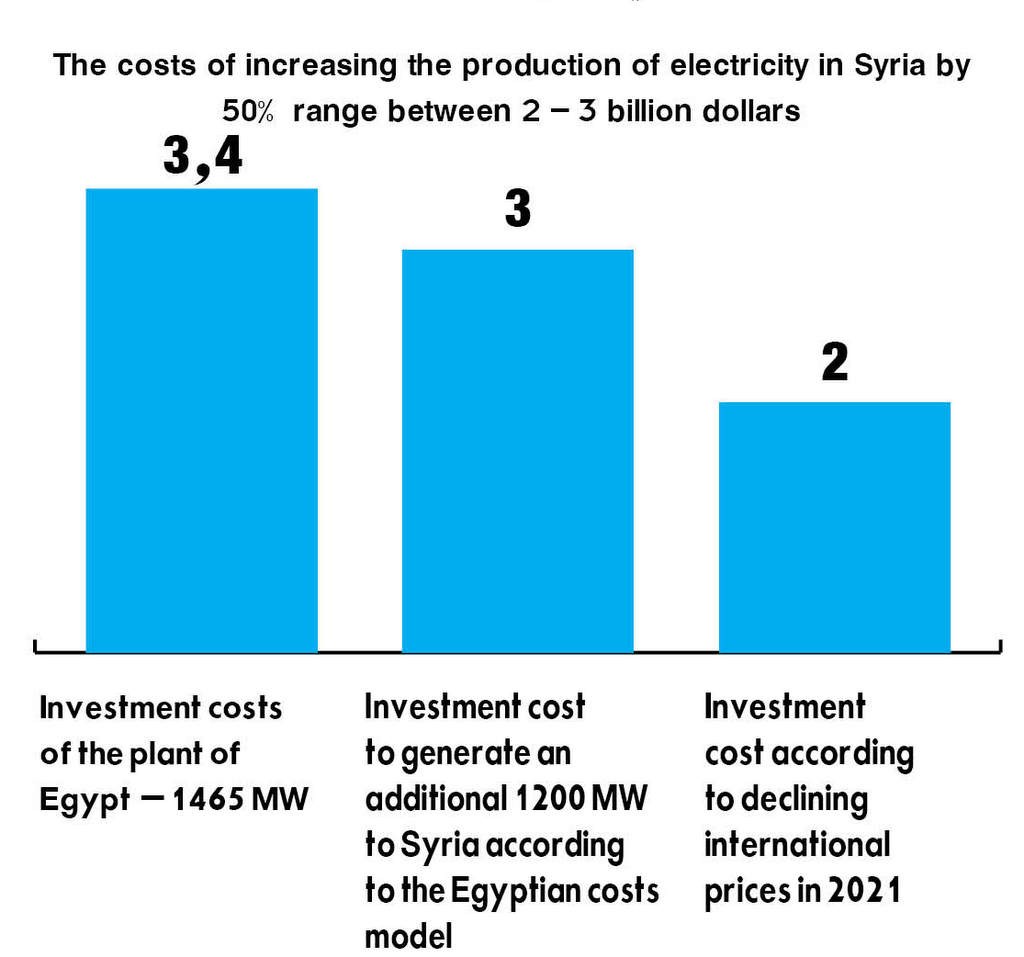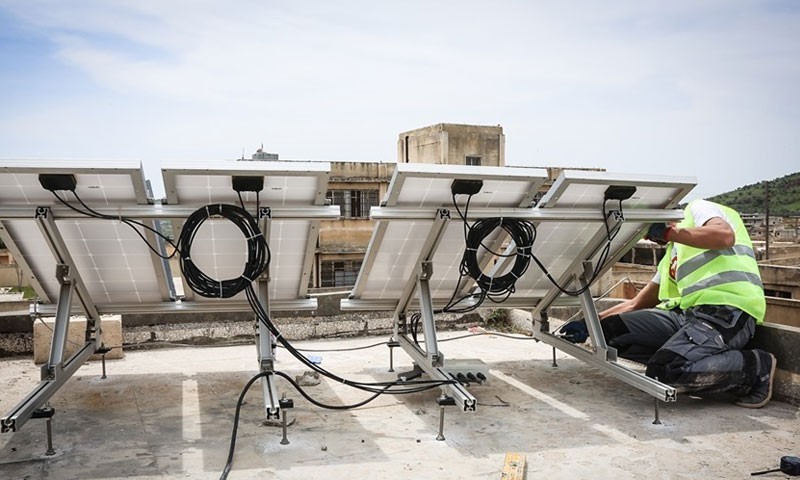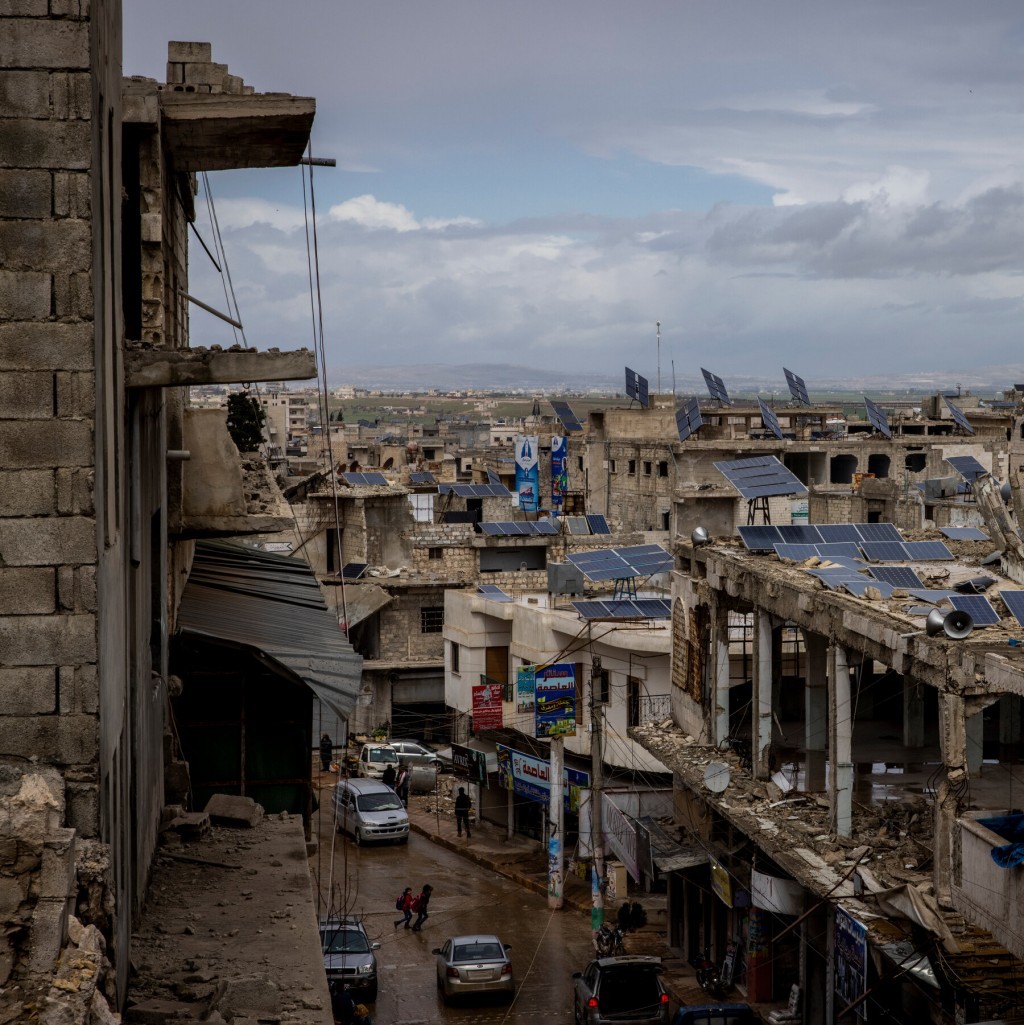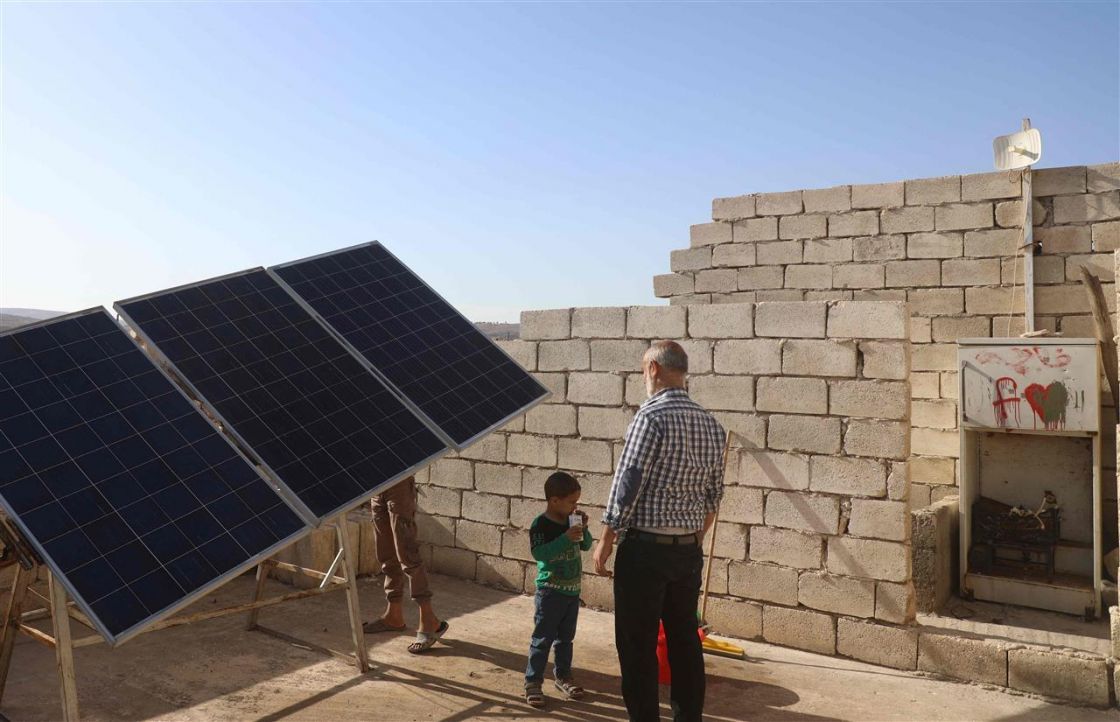- Articles
- Posted
(Revolutionary) Solutions via Solar Power are New Illusions!
There are a lot of statements about generating solar power under the suffocating electricity crisis. However, not even 25% of the daily needs of Syrians in their homes is secured, while entire regions in the country nearly get no electricity! Amidst the escalating electricity deterioration, the repeated talk about solar power perhaps reflects other investment and narrow aspects.
While authorities from the Ministry of Electricity make statements about the situation of power plants and respond to them, (a new tone has started banging on the heads of Syrians) about resorting to solar power as an alternative. So, what kind of investment in alternative power is in 2021 Syria, in which loaves of bread are being rationed? Can these submissions be realistic?
Solar Power is a Serious Alternative, However!
Generating electrical power through the sun in Syria is, of course, environmentally viable and economically competitive. According to previous statements by the Director of the National Energy Research Center in Syria: “An area of 56 thousand square kilometers is feasible as a source of solar power, where the intensity of the solar luminosity in it reaches 5 kilowatts per square meter, and the number of days where there is solar luminosity exceed 312 days a year”. If we compare these rates with the intensity of luminosity in Germany, one of the largest investors in solar power, the rate of luminosity in Syria is 8 times the rate in Germany of approximately 0.6 kilowatts per square meter, and with an average of sunny days that reaches 65 days only. That is, the geographical condition in Syria and throughout the region provides a serious opportunity.
Practically, major founding investment costs of alternative power are one of the main constraints of its spread. However, it should be noted that the technology of alternative energy is witnessing a global revolution that is reducing its costs at record rates, particularly the costs of producing solar PV, which have decreased during the last decade by 82% globally. Also, the estimates of IRENA indicate that the decrease in costs is very rapid and have become less than 7 US cents per kilowatt of courier in 2019, and the number may decrease in the contracts of 2021 to less than 4 cents at global level.
According to these measures, solar power is turning to be a serious choice at the global level, and the cost of producing 1 kilowatt of courier in it has become less economically expensive than fossil fuel production, and less than coal-fired electricity production in particular. However, the issue is not in the cost of 1 kilowatt, rather in the ability to finance such projects, as high costs are offset by returns that are distributed over about 25 years. That is why this type of projects is difficult to be other than a government project and public spending. Countries get funding for these projects in exchange for loans with interests that should be paid before the 25 years, while countries continue to receive the funds of these loans from consumers. Perhaps the example of Egypt can be useful in clarifying the situation of investment in this sector.
The Need for Billions of Dollars to Generate half of the Current Energy
We can take an example from the latest declared huge project in the region, which is the project of Egypt to build the largest solar power plant in the world. This needed an investment of €3.4 billion to install 1465 MW, which is close to 60% of the current Syrian production.
That is, on the Egyptian scale, we will need an investment that approximates €3 billion in order to increase our production of electrical power at a rate of 50%. Even with taking the 40% decline in global prices within a year into consideration, the cost remains at around €2 billion to install an additional 1200 MW approximately that can be secured by restoring production in Syrian gas fields.
Such sums are not considered huge when the reconstruction phase is being talked about and when such projects are a necessary part of the future of Syria, which reduce the consumption of fossil fuel, improve environmental indicators, and operate panel production facilities that currently have a foundation. However, talking about turning solar power into a major serious alternative is only giving false hopes, because Syria, as a besieged country that is suffering from a political crisis and a humanitarian catastrophe and half of its people are dependent on aid, will not be able in the current situation to secure billions of dollars of investment money to generate solar power. More specifically, public money is no longer enough to finance the necessary bread. Furthermore, reliance on private investment is also not serious, as no one will engage in such great “projects” at the moment.
By going back to the example of Egypt, this country that is turning into one of the region’s investment centers needed the contribution of 39 international and regional finance companies and institutions to constitute this project. Also, it needed to be of high feasibility to an area of 37 square kilometers, i.e., to an area of 3700 hectares in a suitable place and land. Practically, talking about large production via solar power in Syria is unrealistic, and what is meant in these projects is only at investment levels between small to average, which we will discuss the prospects of some of them.

Small and Average Investment Projects
Local sources have talked about a joint venture in the industrial town of Adra to generate 100 MW of solar electricity in partnership with a government agency, and it secures an important part of the electricity needs of the city. So, on the scale of previous investment costs, a project like this will require a minimum investment cost of approximately $170 million, the costs of which would be distributed over 25 years of the estimated life of the plants.
Before that, there is the PV plant in Aleppo Sheikh Najjar, whose contract was announced in 2018, and its foundation stone was laid only this year, with a cost of €36 million and a capacity of 33 MW per year that cover less than 10% of the electricity consumption of Sheikh Najjar.
The investment mechanism of such PV plants that only serve part of the needs of industrial cities is not clear. However, private investors in Syria will not wait 25 years to get back their money with their profit by selling electricity to the state apparatus, and sale prices will include a high profit rate. The smallest levels of private investment in solar power sold to the state illustrate some of the profits of these investments.

Investors who get Payments from the State
Such a small investment in generating solar power is taking place in Syria, but at very low rates. As even last year, there were about 50 small private projects to generate solar power near public power plants, which produced no more than 11 – 17 MW, and this only constitutes a proportion close to 0.5% of overall electricity production. According to the lowest segment of household consumption in a cycle of 600 KW, these amounts are enough to secure full household electricity for only 3 houses annually.
In other words, we are still really far from the transformation of solar power into a significant figure, and for comparison, Jordan, for example, provides 20% of its electrical power through solar power. Practically, those 50 projects to generate solar electricity in small amounts, get payments from the Ministry of Electricity at prices that are not announced by the official authorities as usual, but announced by a press report after which the Syrian journalist was arrested. According to the report of Al-Wehda newspaper at the time, the Ministry of Electricity is buying 1 KW-h from these people at approximately 9 cents, and sums that reached 137 million Syrian pounds in one month for investors who produce approximately 6 MW-h a year.
For comparison, it should be noted that the last Egyptian government bids of solar power were based on a cost of 2.4 cents per 1 KW-h. That is, the payments of investors in Syria are higher than the costs in the region by more that 350%. So, that is how it is, as no investor will invest in these costly energies, unless he/she guarantees an exceptionally high and monopolistic pricing, as is the general contracting and investment system in Syria.
Investment in Individual Consumption; Panels are an Example
The other side of Syrian investment in alternative power is individual consumption through panels installed for domestic or commercial use, through specific companies that import systems and their components. There are no accurate statistics for their number, but they practically cover part, but not all domestic use. Their costs also are very high, as they need approximately $800 per day, and about 2.4 million Syrian pounds to get panels to light the house by led lights, and to operate electrical appliances that do not include a refrigerator, a washing machine or other necessary appliances for daily consumption.
Such fully imported small systems are an investment door for specific importers. They depend on the need of families who are relatively stable financially to secure the minimum of electricity consumption at a high cost, after despairing of the public electricity system. Practically, those families pay a solar electricity bill to these importers that approximate 16k per cycle, in exchange for less than half of the services of domestic electrical consumption.

Conclusion
Talking about generating electricity from solar power in Syria as an alternative choice is a new way of giving false hopes and hints for solutions. Solar power will definitely be an essential investment in the future of the country when it is reunited and needs to invest all its energies. Nonetheless, this investment will require billions of dollars that the current government is uncapable of securing, and will not find investors regionally and internationally to constitute large projects as happened in Egypt, where 39 investment institutions and agencies participated to finance $3.4 billion.
Talking about solar power as an alternative to electricity can be useful for marketing some small and average investments that will cost the state apparatus significant amounts of money to produce a negligible part of the overall power needs. Until today, what is produced via solar power is less than 0.5% of the production of electricity and in exchange for very high payments for investors. Even in the promising project in Adra and Hassia, if completed, the contribution of solar energy will be 6% of the total. The most important investment that fits the nature of business and financial sector in Syria is importing solar generating systems and selling them to consumers at significant profits. So, their installation means that the family pays an electricity bill of 16 thousand Syrian pounds per cycle for 25 years, in exchange for lighting and the minimum of electricity needs.



 Ashtar mahmood
Ashtar mahmood